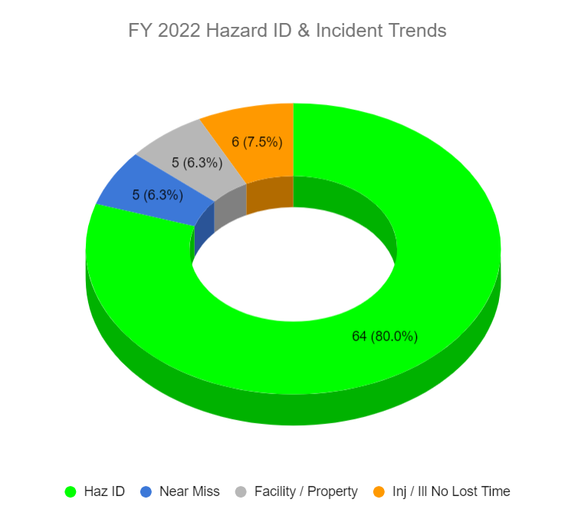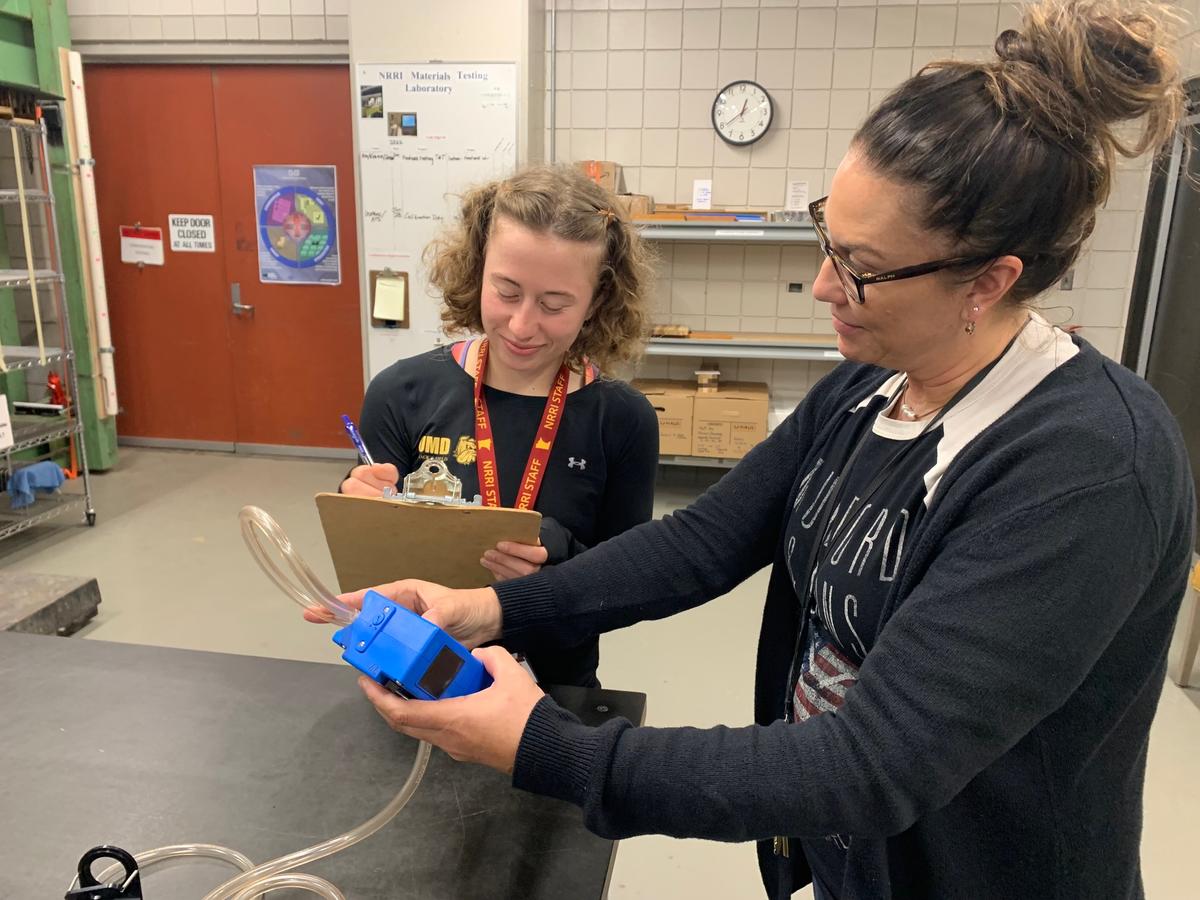“When the focus is on tracking safety mistakes, people hesitate to report them,” said NRRI Safety Manager Jean Cranston. “That’s not what we want. So, we put a positive spin on it.”
In July 2021, Cranston initiated a hazard reporting incentive program. She’s asking all employees to report something amiss – a cord on the floor, a wobbly ladder, a vent system not working – before there’s an incident. Each quarter, the employee who reports the most “hazards” receives an award.
“By reporting hazards, we raise awareness and prevent accidents,” said Cranston. “We’re working to instill proactive behaviors that create a safe working culture.”
Green Donuts

Cranston produced a circular graph that challenged employees to “fill the donut green” by finding and reporting hazards at the Duluth and Coleraine facilities, and out in the field. In the course of a year, the “donut” was 80 percent green, reflecting 64 reported hazards. Staff efforts were celebrated with real green donuts, of course.
Cranston is a certified industrial hygienist and a certified safety professional, but she is still challenged by the unique and diverse labs that go from the microscopic scale to full pilot-scale. Researchers often work with hazardous materials, such as peroxide formers and combustible dusts.
“NRRI scientists take on projects that have never been done before,” she said. “With no historical data to help prepare, the start of a new project can feel like we’re trying to predict the unpredictable.”
But by working with the researchers and brainstorming together, they can make predictions. They break down projects into specific steps and evaluate the components in great detail. Sometimes they conduct mock-setups and studies before they start. This allows the team to use science to predict the outcomes and control them appropriately.
Safety Intern
In the spring of 2022, Cranston hired a recent UMD graduate, Haleigh Reindl, as an intern to help organize the fast-accumulating piles of data and documents. Reindl graduated with a bachelor’s degree in Public Health and is enrolled in the Master of Environmental Health and Safety Program this fall.
“I like community health issues and helping people, so this major is a good fit,” said Reindl. “And Jean Cranston will be one of my instructors in the master’s program, so this internship will help me get ahead next year.”
Working to revamp an outdated and confusing chemical inventory system, for example, has taught her more than she ever thought she’d know about chemicals and chemical reactions. And visiting the Coleraine Labs after entering a lot of Management of Change documentation was eye-opening.
“It was really interesting to see the new equipment and get a better understanding of what pilot testing research is all about,” Reindl said. “I’m learning a lot.”
Future Efforts
Cranston is preparing the NRRI facilities to be accepted into the Occupational Safety and Health Administration (OSHA) MNSTAR program. This volunteer program recognizes workplaces that go beyond basic compliance with OSHA standards, resulting in immediate and long-term prevention of job-related injuries and illnesses. She’s hoping to be ready for review in fiscal year 2024.
“This is a big goal for us,” said Cranston. “We’ll be inviting regulators onto our sites for audits and to review our injury rates, investigations and policies. It will be a very real test of our safety program.”
